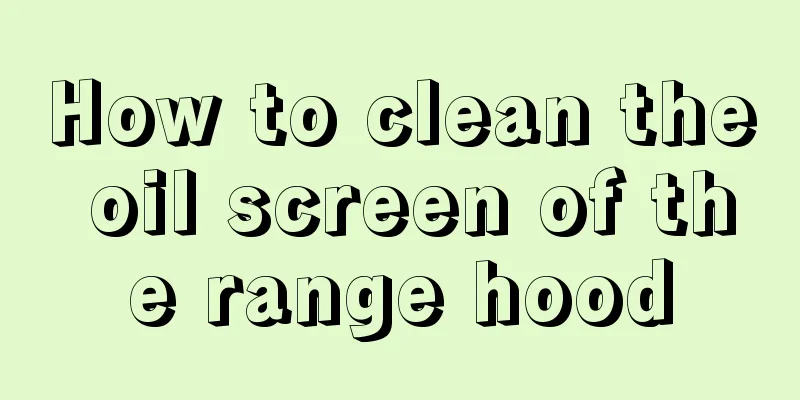Long-term exposure to sulfuric acid

|
Everyone should be familiar with the chemical sulfuric acid. Because sulfuric acid is highly corrosive, cases of burns from sulfuric acid are very common in life. Therefore, most people should be very careful when coming into contact with sulfuric acid, otherwise the consequences of burns will be very serious. However, some people’s jobs require them to come into contact with sulfuric acid for a long time. So will long-term contact with sulfuric acid be harmful to the human body? Long-term inhalation of sulfuric acid gas is very bad for your health. There are roughly three ways that sulfuric acid can harm the human body - skin, digestive organs and respiratory organs, and its harmfulness can be divided into acute and chronic types. 1. Acute: Once the human body comes into contact with concentrated sulfuric acid, it will be burned immediately. If it enters the eyes, it will cause blindness in severe cases. Drinking sulfuric acid will cause serious damage to internal organs or death. If you inhale a large amount of hot sulfuric acid vapor or concentrated vapor released by fuming sulfuric acid, it will damage the upper respiratory tract and even the lung tissue, and in severe cases you will lose consciousness. The human body's sensitivity to this vapor varies from person to person. Usually, people will feel mild discomfort when it is in the range of (0.125~0.5)×10-6, obvious discomfort when it is in the range of (1.5~2.5)×10-6, and unbearable when it is in the range of (10~20)×10-6. Operators who are often exposed to low concentrations of sulfuric acid vapor will gradually become less sensitive to this type of stimulation, the so-called "acid resistance", and will be more susceptible to the poisoning of sulfuric acid vapor. Attention must be paid. 2. Chronic: Contact with sulfuric acid can cause skin inflammation, and frequent inhalation of sulfuric acid vapor or acid mist can cause respiratory or bronchitis. Long-term inhalation of sulfuric acid vapor can cause tooth erosion, which first causes the enamel to lose its luster and then exposes the dentin, causing defects and blackening of the surface. Therefore, in the workplace, factories generally stipulate that the maximum concentration of sulfuric acid vapor should not exceed 1 mg/m3. It has strong irritating and corrosive effects on skin, mucous membranes and other tissues. Vapor or mist can cause conjunctivitis, conjunctival edema, corneal opacity, and even blindness; cause respiratory tract irritation, and in severe cases, dyspnea and pulmonary edema; high concentrations can cause laryngeal spasm or glottal edema, leading to suffocation and death. After oral administration, it causes digestive tract burns and even ulcer formation; in severe cases, it may cause gastric perforation, peritonitis, kidney damage, shock, etc. Skin burns can cause erythema in mild cases and ulcers in severe cases. After healing, the scars shrink and affect function. Splashing into the eyes can cause burns, or even corneal perforation, panophthalmitis and even blindness. Chronic effects: dental erosion, chronic bronchitis, emphysema and pulmonary cirrhosis. ■First aid measures ◆Skin contact: First wipe with a dry cloth, then rinse with plenty of water, and finally rinse with 3%-5% NaHCO3 solution. If serious, go to hospital immediately. ◆Eye contact: Lift the eyelids immediately and rinse thoroughly with plenty of running water or saline for at least 15 minutes. Seek medical attention. ◆Inhalation: Leave the scene quickly to a place with fresh air. Keep the airways open. If breathing is difficult, give oxygen. If breathing stops, perform artificial respiration immediately. Seek medical attention. ◆Ingestion: Rinse mouth with water and give milk or egg white to drink. Seek medical attention. ◆Note: If it comes into direct contact with the skin, use cotton cloth to absorb the sulfuric acid on the skin, then rinse with plenty of running water, and finally soak with 0.01% soda water (or dilute ammonia water). Do not rinse directly! ■Fire prevention measures ◆Hazardous characteristics: It releases large amounts of heat when in contact with water and may cause boiling and splashing. Contact with flammable materials (such as benzene) and combustible materials (such as sugar, cellulose, etc.) will cause violent reactions and even cause combustion. It reacts violently with calcium carbide, perchlorates, fulminates, nitrates, picrates, metal powders, etc., causing explosion or combustion. It is highly corrosive and water absorbent. ◆Harmful combustion products: sulfur dioxide. ◆Fire extinguishing method: Firefighters must wear full body acid and alkali resistant fire suits. |
>>: What can’t be eaten with Chinese toon
Recommend
Dietary considerations for patients with advanced pancreatic cancer
Patients with advanced pancreatic cancer are rela...
What should I do if I have bitter taste, bad breath, and dry mouth when I wake up in the morning
Many friends find that their mouth is dry and sme...
What to do if you stutter when you are nervous
In our lives, many people have very poor psycholo...
What to do if your lips are dark in color?
If your lips are dark in color, you should pay at...
What does it mean when a man has dark lips
Some people may have dark faces. In fact, dark fa...
My chest would sometimes beat violently
The human heart usually beats in a steady and con...
What are the main causes of hamartoma
In recent years, the number of patients with hama...
Misunderstandings in the Treatment of Hamartoma
Many patients have never heard of the word hamart...
Is microwave radiation strong?
We all use microwave ovens in the kitchen, and th...
How to safely go through menopause
Female friends who are about to enter menopause a...
How to effectively prevent lung cancer? Develop these good habits to prevent lung cancer
Lung cancer is a disease with a very high inciden...
What are the specific dietary remedies for lung cancer? Lung cancer patients can try these three dietary remedies
Because of the current living environment, many p...
Briefly describe which exercises can assist in the treatment of colorectal cancer
The best way to deal with cancer is prevention. I...
Does scraping hurt?
Many people have practiced scraping. It is now a ...
What are the phenomena during the peak period of hormone face detoxification
Hormone face is mainly because when treating cert...









